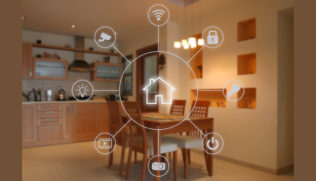So many smart home products are reaching the market, homeowners may have trouble choosing which would provide the most benefit. But one product stands out for homes in areas that experience freezing temperatures: Low temperature sensors.
When it’s warm and sunny outside, it’s easy to forget about cold weather. You may even think you live in an area that doesn’t experience freezing temperatures. But in early 2019, even Las Vegas experienced significant snowfall, and Atlanta temperatures dipped to 22 degrees, according to National Weather Service data.
WHAT IS A LOW TEMPERATURE SENSOR?
Low temperature sensors alert you when the air temperature in a room falls below a pre-defined threshold, allowing you time to act before pipes freeze and burst, causing extensive water damage to your home. You may also have valuable items, such as a wine collection, that require a specific temperature. A low temperature sensor can help you maintain that temperature.
MULTIPLE TYPES AVAILABLE
Some sensors alert you of low temperatures via a smartphone app, while others integrate into your alarm system. Both options allow you to monitor the temperature levels in your home from any location and take action before costly damage occurs. Some sensors can also monitor for motion, humidity or smoke.
WHERE TO PLACE A MONITOR
Not all rooms in a home are at the same temperature depending on the number of windows, amount of sun and which level of the house the room is located. Low temperature devices should be placed in areas of the home were low temperatures could cause problems, such as in the basement, under sink cabinets with water lines located on exterior walls, or the attic. These areas often drop in temperature before the main areas of the home.
Consider installing a low temperature device to protect your primary residence as well as vacation homes or rental property that may commonly be left unoccupied for extended periods. The Cincinnati Insurance Company offers a premium discount to eligible policyholders who equip their homes with a low temperature sensor.
This loss control information is advisory only. The author assumes no responsibility for management or control of loss control activities. Not all exposures are identified in this article.

